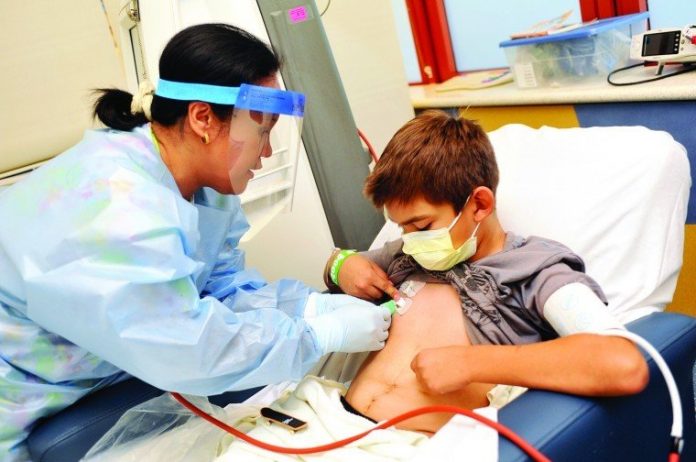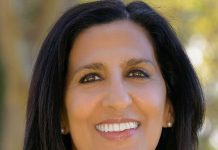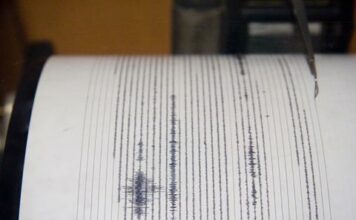Peter Casey is your typical 12-year-old.
He thinks Disney actress Selena Gomez is “hot.” He enjoys shredding concrete at the Las Animas Veterans Skate Park with his best friend Boo Boo, playing “Call of Duty” video games or doodling sketches of cartoons.
And, like any well-adjusted kid brother, he delights in cracking jokes at the expense of his 13-year-old sister, Irie Casey.
“I want to be 6-foot-4-inches,” said Peter, calculating his hoped-for growth spurt. “I wanna be taller than my sister.”
Not that he needs a height advantage to have the upper hand in rough housing.
Currently standing at 4 feet, 9 inches, Peter assured “I already can.”
With a close-knit family, mad skateboarding skills and a promising interest in mathematics, the Ascencion Solorsano Middle School sixth-grader wants just one thing – but he won’t find it under the Christmas tree.
“A lot of kids tell me I’m lucky because I don’t have to go to school. But I don’t think of it that way,” said Peter, sitting on the living room sofa alongside his mother, Patty Casey, 34, in their one-story home on Sherwood Drive in Gilroy.
He lifted up his T-shirt, revealing two incision scars on his lower torso and a pair of plastic valves protruding from the upper right corner of his chest. The apparatus enables Peter to receive his dialysis treatments. Plastic tubes run up his neck via an artery – causing a small bulge beneath the skin – through his heart’s aorta and back down into a single, failing kidney.
“I tell them, ‘Are you sure? Would you rather wake up really early, go to dialysis in the morning, eventually get a really bad headache, and feel lightheaded?’” he said.
Pausing to reach for a saltine cracker, Peter added, “and you get hecka hungry, too.”
Peter was diagnosed with chronic kidney disease due to complications during Patty’s pregnancy. The Centers for Disease Control and Prevention states this condition affects more than 10 percent of people aged 20 years or older in the United States.
As one of 502 children in the U.S. between the ages of 11 and 17 currently awaiting a kidney transplant, Peter is among 90,368 candidates total according to data from the United Network for Organ Sharing – the private, nonprofit organization that manages the nation’s organ transplant system under contract with the federal government.
At the age of 1, Peter underwent a successful transplant surgery after his mother, then 23, donated one of her own kidneys. After turning 10, however, he was diagnosed with chronic kidney disease for a second time.
“At first, I was excited and scared, because I didn’t remember what it was like to do dialysis and I thought it would be fun or something,” grinned Peter, who has been on a cadaver transplant waiting list since July 2011. “It’s not fun.”
Until he’s matched with the right donor, the preteen negotiates his adolescent ups and downs like any other junior higher his age – on top of dealing with lightheadedness, severe cramping in his calves, legs, feet and hands caused by dialysis. This in-hospital treatment performs the function of kidneys, which includes the removal of waste, salt and extra water to prevent them from building up in the body, controlling blood pressure and keeping a safe level of certain chemicals in the blood.
Peter also abides by a cumbersome drug regime.
For two years and counting, he has undergone dialysis treatments on Mondays, Wednesdays and Fridays at the Lucile Packard Children’s Hospital in Stanford University Medical Center, where he sits – hooked up to a special machine, or “artificial kidney” – for three hours and 15 minutes. He attends school Tuesdays and Thursdays at Solorsano, staying afterward for private tutoring sessions.
“It’s confusing. Every day they’re working on something I have no idea about,” said Peter, who admits keeping up with his class’s learning curve is a drag. “I’m really behind in math – and I like math.”
Missing time in class isn’t the only setback. A string of asterisks indicating “off-limits” dot Peter’s life on a day-to-day basis.
Because of his plastic dialysis valves, Peter can’t go swimming unless a nurse is present to dress and change the cavity in his chest.
Due to his sensitive diet and the risks of being exposed to common sicknesses, Peter can’t go to birthday parties or sleepovers.
Most snacks 12-year-olds relish – pizza, chocolate, ice cream, French fries, McDonald’s Chicken McNuggets – are tauntingly taboo, or enjoyed in meager doses because Peter’s kidney can’t filter phosphorous, potassium, dairy and sodium, Patty explained.
When asked about the emotional toll of caring for her son full-time, the engaged-to-be-married mother of three resolved, “I just keep doing what I have to do.”
Patty likens her modus operandi to that of “Finding Nemo” character Dory, an eternally optimistic Regal Tang fish from the animated Pixar film.
“Just keep swimming, just keep swimming, just keep swimming,” Patty said.
For Peter, adhering to a rigid medicinal regime is a sink-or-swim situation.
He wakes up at 5:30 a.m. every day to inhale through a breathing device called a nebulizer, while simultaneously wearing a vibrating vest that helps loosen the mucus in his lungs.
At 6 a.m. he takes two prescription pills, then waits 30 minutes before taking his blood pressure. If it measures low, he takes two more pills.
More drugs are taken throughout the day, including one that must be ingested before every meal. The evening regimen is a repeat of the morning, but with different prescriptions. There are 10 in all.
Getting a new kidney and cutting ties with this monotonous routine is what he craves.
Peter came close to tasting freedom last year, when his mother’s longtime best friend volunteered to donate one of her kidneys.
With everything arranged for a surgery to take place July 19, 2010, the friend backed out four days prior, said Patty, with noticeable resentment in her voice.
“At first I thought she was just messing around with me and my mom,” said Peter, recalling his reaction upon learning he was back to square one. “And then I knew it was real, because my mom started to cry.”
Peter’s sister also tested as a donor but is too young, Patty said.
Still, for someone whose remaining years of carefree childhood were intruded on by a disease, Peter is articulate and good-humored; shouldering his circumstance with resilience, character and a matter-of-fact outlook.
He is currently in the process of becoming activated on the National Kidney Registry, which facilitates the swapping of kidneys between donors and patients.
A close friend of the Caseys – Jamie Ellis, 40 – has offered to donate her kidney in a paired exchanged through the National Kidney Registry, since she did not test as compatible to donate directly to Casey. Pending a few more test results, Peter and Ellis would become enrolled in the program together, and hopefully matched, successfully, with another incompatible recipient and donor registered in the National Kidney Registry.
Adding to the complexity of this process is a time crunch. Once a person has made the decision to get a transplant, studies indicate the less time a patient is on dialysis, the higher the survival rate of the transplanted kidney, according to the National Kidney Registry.
Being one of 90,368 candidates in need of a new kidney doesn’t damper Peter’s will.
He “plans” on getting a transplant before the seventh grade.
That’s when he would have had a new kidney, prior to his mom’s friend backing out from the surgery.
“I was so happy, and then it didn’t work out,” said Peter.
Already salivating over his post-surgery wish list, Peter hasn’t lost sight of that timeline.
“I’m telling everybody to bring me food,” he said, without pausing to think about his requests: “Twenty pieces of chicken nuggets from McDonald’s, a large French fry, sausages, coke, Top Ramen and three Pizza My Heart pizzas. And then I’m gonna go dirt biking and swimming.”
Peter is also looking forward to an “explosive growth spurt,” a perk doctors say he’ll experience once he’s off dialysis.
“Everybody who calls me ‘shorty’ better watch out,” he joked.
After graduating high school, Peter plans on attending Stanford Medical School and becoming a doctor – something he’s wanted to be since he was 3-years-old.
Patty said she’s not surprised, since her son “grew up around them.”
Peter said he’s leaning toward becoming a pediatrician.
“I look up to my doctors the most,” he said. “I know how they are, and how they can help kids. I can relate.”














